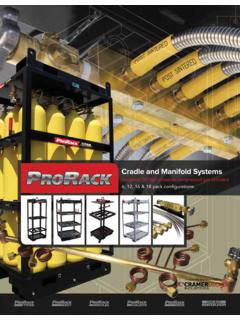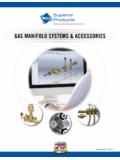Transcription of Defense Technical Information Center Compilation …
1 UNCLASSIFIEDD efense Technical Information CenterCompilation part NoticeADPO10772 TITLE: Aircraft LoadsDISTRIBUTION: Approved for public release, distribution unlimitedThis paper is part of the following report:TITLE: Aging Aircraft Fleets: Structural andOther Subsystem Aspects [le Vieillissement desflottes d'avions militaires : aspects structureset autres sous-systemes]To order the complete Compilation report, use: ADA390841 The component part is provided here to allow users access to individually authored sectionsf proceedings, annals, symposia, ect. However, the component should be considered withinhe context of the overall Compilation report and not as a stand-alone Technical following component part numbers comprise the Compilation report:ADPO10764 thru ADPO10778 UNCLASSIFIED9-1 AIRCRAFT LOADSDr.
2 M. Neubauer, G. GuintherDaimlerChrysler Aerospace GmbHMilitary Aircraft, MT22, Postfach 80 11 6081663 Munich, GermanySUMMARYThe life of a weapon system is influenced to a high degree by the structural integrity of the airframe. Numerous programs toensure this have been established within NATO's Air Forces. Structural loads, leading to fatigue as well as corrosion,depending on the usage environment, are the major reason for degradation of structures. The many different classes of loads,the generation of loading conditions during the design phase, as defined in the weapons systems specification, considerationof static and fatigue loads for structural lay-out and validation concepts are procedure of converting overall aircraft loads ("external loads") into individual component loads is shown in BACKGROUNDThe effectiveness of military force depends in part on the operational readiness of aircraft which itself is largely dependenton the condition of the airframe structure.
3 This condition again is affected by a number of factors among those the physicalloads in various forms together with the used life of the airframe are important. With increased and extented usage ofairframes in all airforce inventories and the requirement for various role changes the subject of airframe loads assessment, -qualification and aircraft loads-monitoring becomes more important, not only for flight safety but also and with anincreasing tendency for economic general understanding of the various types of airframe loads, their generation and application during the design process,the transfer processes from "external loads" into "structural loads".
4 Loads qualification during ground and flight testing istherefore of equal importance to the process of usage monitoring and derivation of usage factors from the different fatiguetests or the set-up of structural inspection life of aircrafts are discussed, often the flight hours or number of flights are still considered the governing factor,sometimes adapted with factors on "damage hours" or "usage", while from a structural engineering viewpoint theoperational stress spectrum and therefore the life on the different aircraft components are not only a matter of flight hoursand spectrum ratio but also driven by modification status, structural weight status and role paper describes loads- analysis and verification activities during the major phases of the life of anairframe, where structural loads and their influences on the airframe condition are vital to the structural integrity and theeconomic usage of the weapon system.
5 "* The structural loads during design and Qualification of A/C structures"* Loads monitoring during usage"* Impacts due to aircraft modification and role with respect to the increased usage of theoretical modelling are also STRUCTURAL LOADS DURING THE DESIGN AND QUALIFICATION OF AIRCRAFT STRUCTURESL oads are accompanying an aircraft's life from "the cradle to the grave". Although the overall type and magnitude of majorload sets remain the same, there is no "fixed" loadset that is be applied to one aircraft model throughout the life and oftenidentical airframes serving different roles within a fleet over time will be subjected to very different include as much as possible (or specified) of these loading scenarios in the early process of designing a new type ofaircraft is the responsibility of the loads engineering department, while ensuring that these loads can be safely enduredthroughout the specified life is the task of the design and stress engineers.
6 "New" loadsets, developed later during usage ofthe aircraft are common tasks and handled similar as the "initial design loads" by the design authority with the constriction,that now the airframe is already build and deployed and the focus is on minimising changes though structural modificationsto qualify the structure for its new environment either through analysis and / or short, every major change in the aircraft's role, payloads or usage in principle influences the loads acting on the airframeor at least some components. Fig. 1-1 gives an idea how loads are initially generated and how they are used throughout thedesign-, qualification- and usage presented at the RTO A VT Lecture Series on "Aging Aircraft Fleets: Structural and OtherSubsystem Aspects ", held in Sofia, Bulgaria, 13-16 November 2000, and published in RTO ~SJCloG mMonututoringeriUndercarriag Loads sFig.
7 1-1 Loads Main Loads and FatigueThe determination of loads together with the qualification for static strength and fatigue by calculation and test for allimportant structural components is a main prerequisite for successful design and safe operation of any for transport aircraft with their rather limited range of operational manoeuvres and high number of flight hours /cycles fatigue is the main design driver for the airframe, fighter aircraft are predominantly designed to (static) limit loadcases for the "corners" of the envisaged flight envelope, which in general cover a lot of strength required for fatigue of theircomparatively short this is only true as long as fighter life does not exceed the originally planned lifetime and the roles, missions etc.
8 Arecompatible with the design criteria at the aircraft in both cases does not only mean that an aircraft is getting older in terms of flight hours and flight cycles, italso means that some of the reference data for the basic design criteria have changed during time, :-airframe and equipment mass growth-enhancement of systems performance, especially engine thrust-new configurations (stores)-update of flight control systems (FCS) (electronically or hardware changes like added slats or enlarged ailerons)-mission profiles and additional/changed roles-actual usage spectrumMost of these changes have an immediate impact on aircraft load scenarios, others will not change load levels but maychange underlying statistic, fatigue spectra.
9 Assessment of external loads is therefore a basic task throughout the life of in many cases there is no simple one to one relationship between "external" loads and local internal stresses,which after all are the basis for the assessment of "life consumption" or "remaining life" of structural components. Butproviding loads are known for a special structural interface or component, reliable conclusions can be drawn regarding localstresses relating t tthe manifold of load cases from experience, measurement and detailed FE analysis during design,qualification and test phases in many addition the comparison of load spectra alone may already be suitable for drawing conclusions without recourse to detailstress calculations of specific locations for components with limited loadcase variations landing The Determination of Design LoadsDesign loads.
10 Better "Initial Design Loads" are the first step in the loads history of an airframe that influences the detaildesign of a component ( wing or fuselage structure) or, at a later stage in the design process, a part ( wing spar cap orfuselage skin panel) in many details. Since not every load is determining these design tasks, establishment and identificationof the "design loadcases" is important. The following is a summary on the methods how design loadcases are determined,with special attention to points where an immediate context with fatigue calculations shows a typical "loads loop" which usually is repeated several times in the different phases of the aircraft of all the Structural Design Criteria (SDC) are prepared as a basis for design, specifying the basic performance andflight parameters, then a Loads Model (LM)












